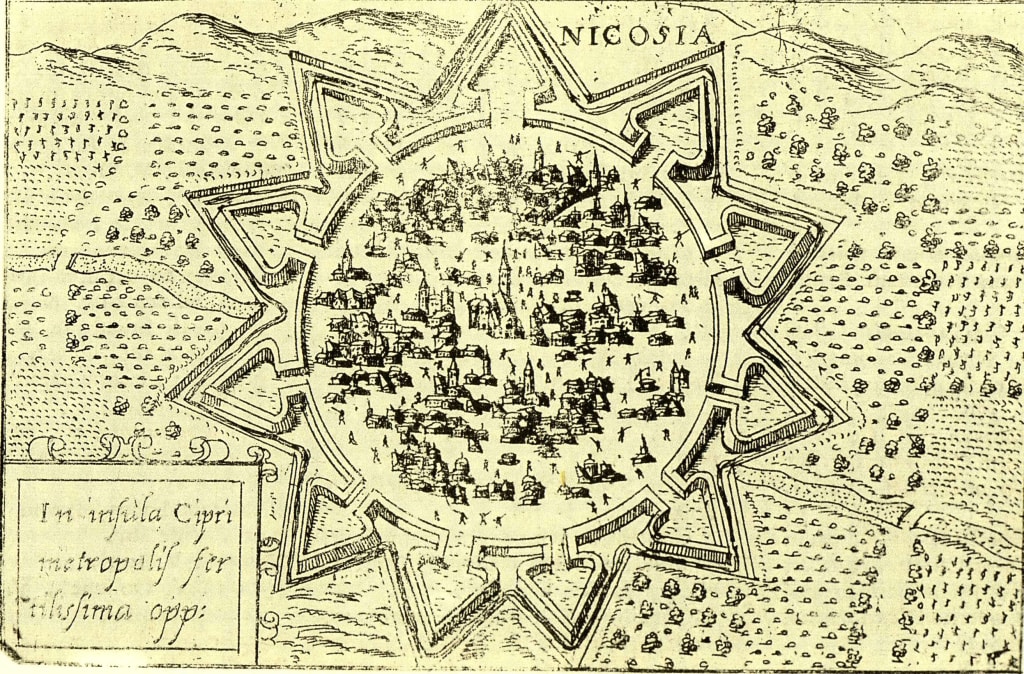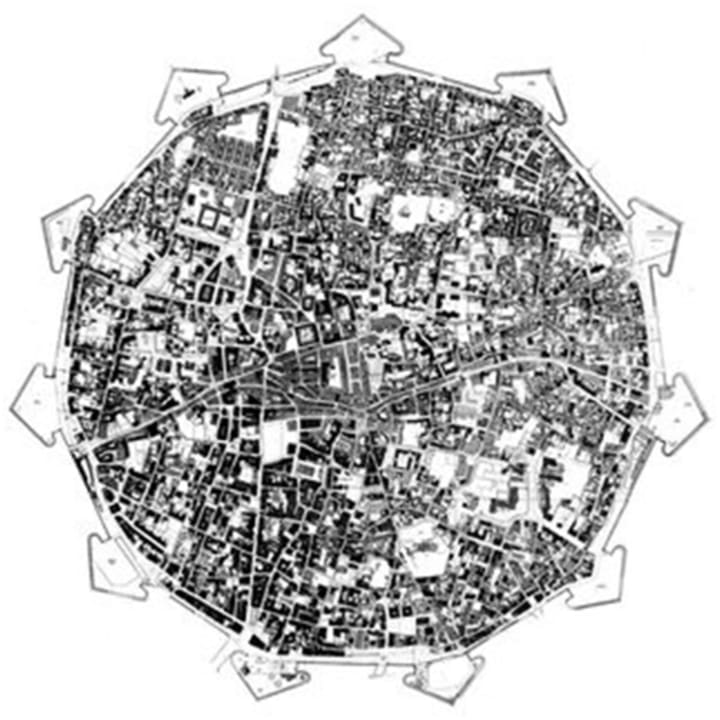
Topic: The Venetian Walls of Nicosia: A huge regular octagonal fortification wall in the heart of Cyprus – A STEAM approach by students of the 2nd High School of the Pancyprian High School of Nicosia.
1. Selection and specialization of the subject / Initiative
The history of the Venetian Walls of Nicosia is well documented since there is an abundance of historical facts and information both in encyclopedias, publications and articles on the internet. The iconic fortification walls of Nicosia were built (in their final form) by the Venetians in 1567, they have the shape of a regular (perfect) hexagon with a total circumference (length) of approximately 5 kilometers. Our school, the Pancyprian Gymnasium of Nicosia, the most historic school in Cyprus (first year of operation in 1822), is located in the heart of the old city of Nicosia, within the Venetian walls that enclose it and only a few steps away from a from the 11 gates of the walls, the Famagusta gate. The Venetian walls are a huge building for the time and conditions of Cyprus, which, however, leaves many questions as to how it was constructed. Unlike a regular hexagon, octagon, decagon or dodecagon, the regular hexadecagon (a polygon with eleven equal sides and eleven equal angles) does not belong to the shapes that can be constructed with a ruler and compass. The length of its side is almost never a whole number, nor can its angles (internal corner and central) be calculated exactly, especially when we consider the means that the engineers and architects of that time had. How did the architect of the walls, Giulio Savorniano, manage to plan, measure on the ground and build with his team such an even, symmetrical and large building, without the use of satellite images, laser tools and drones to see the final result from above;
What method did they use to approach this construction and achieve such a beautiful and perfect circular effect? A result that we enjoy at any time with the use of technology but its creators never had the opportunity to see, if only to make sure that everything went well and the building is - indeed - a perfect, symmetrical, regular hexagon. Our research will focus on the constructional/mathematical dimension of the creation of the walls, which is absent from the widely accessible literature. After studying the basic properties of the hexagon we will focus on the approximate methods that - perhaps - the engineers and architects of that time used.
2. Determination of purpose and goal
2.1 The purpose of the paper is to study the basic properties of the regular hexagon and to study the various approximate methods that have existed since ancient times for constructing a regular hexagon without particularly large deviations.
2.2 The aim of our work is to understand and try to "illuminate" more the way in which the architects and engineers who built the walls of Nicosia in 1567 worked, managing to achieve such a beautiful and symmetrical result with minimal means of precision (which requires such a complex and constructionally difficult shape as the regular hexagon).






Comments
There are no comments for this story
Be the first to respond and start the conversation.